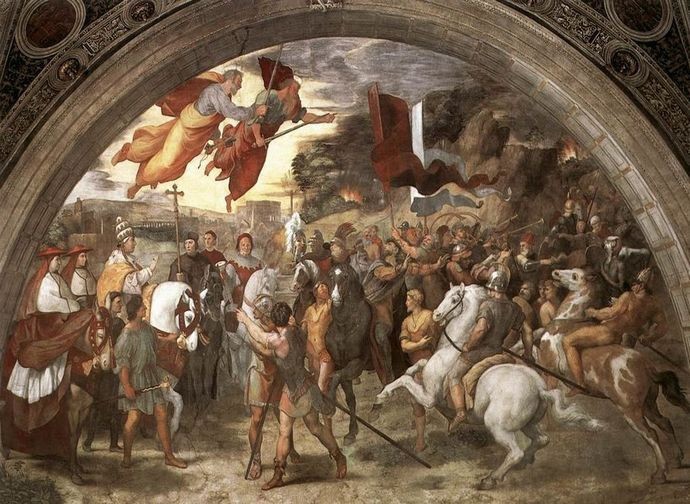Saint Leo the Great
Aware of the very high responsibility of the Petrine ministry, he was among the greatest pontiffs of all time. St. Leo the Great (c. 390-461) led the Church for over 21 years, protecting her from heresies and forces of disintegration, while in the West the Roman Empire was crumbling.

Aware of the very high responsibility of the Petrine ministry, he was among the greatest pontiffs of all time. St. Leo the Great (c. 390-461) led the Church for over 21 years, protecting her from heresies and forces of disintegration, while in the West the Roman Empire was crumbling. Already as a deacon, he was one of the most popular figures in the clergy. Other saints such as John Cassian and Cyril of Alexandria consulted him. His prestige was also enormous at the imperial court, so much so that he was chosen for a mission in Gaul, where he managed to defuse the danger of a civil war. While he was still on the other side of the Alps, he received news of the death of Sixtus III and an invitation to return to Rome because he had been elected as his successor. It was the year 440.
Leo worked hard to consolidate the unity of the Church. He tirelessly promoted Roman primacy as the fruit of the Divine Will to entrust to Peter the role of universal pastor, because “to one apostle is entrusted what is communicated to all the apostles”. He vigorously defended ecclesiastical discipline, did not hesitate to reproach the bishops who departed from it, lucidly managed the vicariates of Arles and Thessalonica and brought back down to its rightful rank the patriarchate of Constantinople, which aspired to rise above the other patriarchal seats of the East. His zeal for the care of souls can be seen in the 143 letters and 96 sermons that have been passed down, in which he expounds dogmatic content and exhorts the faithful with the same elegance and clarity.
He energetically opposed heresies. He fought Pelagianism, Nestorianism, and Manichaeism. And, above all, with the famous Tomus ad Flavianum - a dogmatic letter sent to the patriarch Flavian, who was also a defender of Catholic orthodoxy and for this reason persecuted - he disavowed the Eastern monk Eutyches and his Monophysism, which heretically denied the human nature of Jesus: the Holy Father confirmed the doctrine of the Incarnation and the coexistence of human and divine nature in the one person of Christ. After the farce of the Second Council of Ephesus, in which the papal legates were prevented from reading Leo's letter, the Pope managed to convene the Council of Chalcedon (451), during which the bishops solemnly read his dogmatic epistle to Flavian. “Peter spoke through the mouth of Leo”, said the Council Fathers. And it was true. Chalcedon is a milestone in Christology, crowned by the Councils of Nicaea (325), Constantinople (381) and the First of Ephesus (431).
It was around him that the Roman people, tried by famine and barbarian invasions, came together. The Emperor, too, asked him for help when the Huns crossed the Alps in 452. On the request of Valentinian III, Leo went to a place near Mantua to meet Attila (to whom, according to tradition, Peter and Paul appeared with unsheathed swords in defence of the pope; in the picture a painting by Raphael on this theme) and dissuaded him from continuing the invasion. Three years later, when Gensericus with his Vandals invaded Rome, the saint went unarmed and surrounded by the clergy to meet the invader, who agreed not to set the city on fire and spared the basilicas where in the meantime the population had taken refuge. In a critical phase for the Church and a phase of decadence for the empire, St Leo the Great therefore helped to strengthen the authority of the papacy, acting both as an excellent theologian and as a great pastor. In 1754 Benedict XIV proclaimed him Doctor of the Church.
Learn more: Catechesis of Benedict XVI on Saint Leo the Great (General Audience of 5 March 2008)




